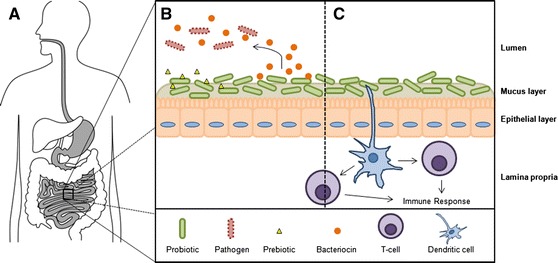Fig. 3.

a Probiotic microbes delivered orally must survive varying environments encountered through gastrointestinal transit, including acidic gastric juices (pH ~2) in the stomach, and bile in the small intestines. b At the intestinal epithelia, probiotics have been reported to adhere in high numbers, leading to competitive exclusion of pathogens. The growth of certain probiotics can be stimulated by the presence of complex prebiotic oligosaccharides. Additionally, some probiotics produce bacteriocins and other antimicrobial agents which may antagonize pathogens in the lumen. c Probiotics bound in the mucus and epithelial layers are proximal to dendritic cells of the mucosal immune system, leading to immunomodulation
